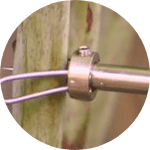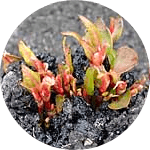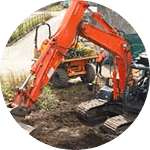Spear Thistle Removal & Control

The overview
Common Name: Spear thistle
Latin name: Cirsium vulgare
In Detail
- Plants form a deep branched taproot in the first year providing good anchorage into the ground.
- Seeds are air borne and readily germinate in warm weather. Each seed head can produce around 100 seeds.
- Although the species can be invasive, seeds are an important food source for a range of farmland birds including linnets and finches.
Who we help
We have a long track record of managing some of the most complex sites in the country and have worked with the Environment Agency on several large flood alleviation projects, as well as providing advice to the majority of house builders and developers in the UK.
Click here to view who we help







Habitat & Distribution
- Spear thistle can be found throughout the UK. This native species is commonly found on disturbed grounds, farmlands, road side verges, and gardens. It thrives is soils of high fertility.
What’s the problem?
- Spear thistle can quickly spread via seeds which are dispersed by wind.
- Spear thistle is an injurious weed species and is listed under the Weeds Act 1959.
Identification
- Spear thistle is a tall biannual species, the flowering stem typically grows to 30cm – 1m in height usually in the second year.
- Leaves are deeply divided with lobes terminating in a sharp spine. The upper surface of the leaf is rough and hairy.
- Flowers heads appear from July to September with lilac-purple florets.
- Seeds have a downy pappus which aids wind dispersal. The flower stems die back after producing seed.
Legal Implications? *England
- The Weeds Act 1959 aims to prevent the spread of listed species onto private land (Ragwort, Broad-leaved Dock, Curled Dock, Creeping Thistle, and Spear Thistle).
- The Act allows for powers of enforcement requiring land occupiers to take action to control infestations to prevent the spread of Injurious Weeds onto neighbouring land.
- Failure to comply with enforcements can result in penalties and convictions.
Control Methods
Chemical Control
Spear thistle can be successfully treated with herbicide, applications are most effective whilst the plant is actively growing between April and October. Established infestations may require treatment over a number of years to ensure the seed bank is depleted.
Mechanical Control
Infestations can be weakened by repeated cutting over a number of years before the plants produce seed.
If you have concerns over Spear thistle on your land, if you are unsure of your legal responsibilities, or if you would like a quotation for control, please contact one of our specialist surveyors. Treatment costs start from £380.00 + VAT.

Where we have worked
We operate nationwide with a Rapid Response Team on standby 7 days a week, to deal with the most urgent client enquiries.
We’re a dedicated team of professionals who share a great deal of experience. We invest heavily in the continual training of all our employees, ensuring you always have a highly qualified team working on your project with the latest industry accreditations.
Our process

1. Identify
Our first step is to identify if you have an invasive plant. For a quick ID, you can send us some photos. Alternatively, we can carry out a full site survey to confirm the extent of the infestation.

2. Solution
We will provide a range of treatment options individually tailored depending on your site requirements.

3. Quote
A detailed breakdown of costs for each phase of treatment will be provided, including on-going monitoring programmes with insurance backed guarantees.

4. Removal
Our experienced and professional in-house teams will carry out the treatment to the highest of standards to achieve full eradication. All works are carried out in accordance with the INNSA Code of Practice.

5. Treatment
A range of treatment solutions are available, from in-situ herbicide application to excavation and removal or burial. All carried out in-house by our experienced team.

